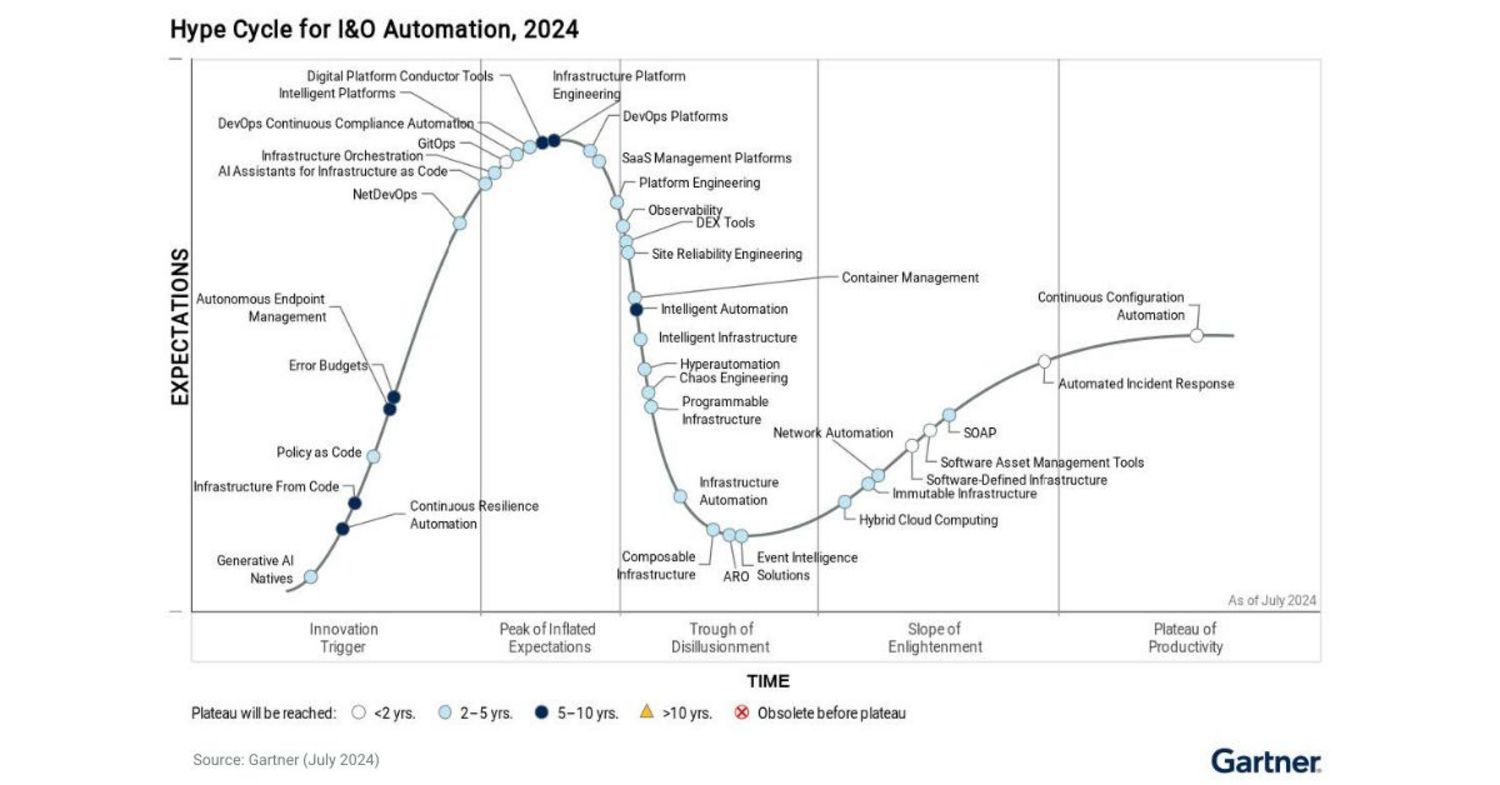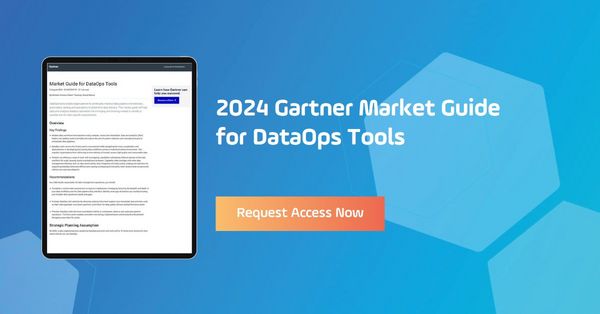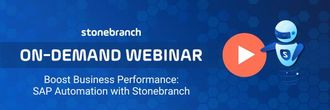Blog Post Gartner Hype Cycle for I&O Automation: What's Next in 2024?
The Gartner Hype Cycle for Infrastructure and Operations (I&O) Automation delivers the top trends and innovative strategies — see what's changed in 2024.

The Gartner Hype Cycle for I&O Automation is a valuable resource for IT professionals who want to stay up-to-date on the latest trends in I&O automation. The report explores the most promising I&O automation technologies, and it provides insights into their maturity, adoption, and capability to solve real-world business problems.
In this blog post, we will summarize the biggest changes in the Gartner Hype Cycle for I&O Automation in 2024. We'll also discuss the implications of these changes for IT professionals and businesses.

Go-Getters in the I&O Automation Hype Cycle
Most of the categories shown on the 2023 curve moved forward in 2024 but stayed within the same phase. Some technologies moved into new phases along the path of innovation, at varying paces of speed. Among those moving forward by one phase:
- Digital Platform Conductor Tools, GitOps, and Infrastructure Orchestration are now at the peak of expectations, marked by well-publicized activities of varying degrees of success. All three practices are expected to have a high level of benefit.
- Digital Employee Experience (DEX) Tools, Observability, Intelligent Infrastructure, Site Reliability Engineering, and Chaos Engineering all entered the trough of disillusionment, as I&O teams try to reconcile the results of their pilots against overly optimistic expectations. Observability and Site Reliability Engineering are considered transformational, while DEX Tools and Intelligent Infrastructure have high-value ratings.
- Immutable Infrastructure entered the slope of enlightenment, where the benefits of the innovation become more clearly understood. It's expected to have a moderate benefit impact.
- No practices entered the plateau of productivity in 2024. Continuous Configuration Automation remained in this category for another year, as it continues to offer a high-value rating. It’s well on the way to mainstream adoption in the next two years.
11 strategies moved off the chart in 2024. Much like DevOps in 2021 and Workload Automation (WLA) in 2018, these approaches have become so widely accepted and proven that they’re no longer considered forward-thinking approaches — they’re mainstream drivers of enterprise initiatives. These newly mainstream categories include Value Stream Management Platforms, Continuous Compliance Automation, SMP, Cloud Data Backup, AIOps Platforms, Vulnerability Prioritization Technologies, Intent-Based Networking, Continuous Delivery, Network Automation, Cloud Migration, and DevSecOps.
Newcomers to the I&O Automation Hype Cycle
Seven strategies are new this year. These new kids on the block can enter the >chart at any stage.
- Generative AI (GenAI) Natives are technologies that use natural language processing (NLP) as a central part of their value.
- Continuous Resilience Automation (CRA) integrates and enforces operational requirements throughout the software lifecycle, in alignment with the organization's IT resilience program.
- An extension of infrastructure as code (IaC), Infrastructure from Code (IfC) is an automation method that uses application code to determine and provision cloud infrastructure based on policies.
- Intelligent Platforms integrate compute, storage, and networking with the application software stack to create dedicated workload architectures.
- SaaS Management Platforms (SMPs) help organizations manage the entire SaaS application lifecycle from a single solution.
- Event Intelligence Solutions use artificial intelligence, machine learning (AI/ML), and data analytics to enhance and automate event management.
What about Service Orchestration and Automation?
New to the I&O Automation Hype Cycle in 2021, the service orchestration and automation platform (SOAP) category joined the curve already climbing the slope of enlightenment. This early-mainstream position indicates where initial, potentially inflated expectations recede, and true benefits are more widely understood. It’s a high-priority technology that’s expected to reach mainstream adoption in the next two to five years.
How did SOAP end up so far along, so quickly? It actually represents a modern evolution of WLA, which, as mentioned earlier, moved off the list a few years ago. Modern SOAPs extend WLA, job scheduling, and batch processing to support event-based scheduling in real-time, as well as cross-platform orchestration with one central command center.
SOAPs are designed to help businesses be more flexible and customer-focused in the cloud, big data, and DevOps. They create a strong base for future growth by enabling users to:
- Automate in real time. Use any combination of event-, time-, or batch-based prompts to create workflows that keep up with your business.
- Facilitate business-wide agility. By connecting IT workloads with business workflows, you extend automation's role beyond operational efficiency to support your transformation initiatives.
- Centrally manage your hybrid IT infrastructure. Manage any combination of on-premises and cloud-based compute, network, and storage resources.
- Orchestrate processes across applications. Create and manage workflows across multiple applications and platforms, no matter where they reside.
- Data pipeline orchestration. Put the ops in DataOps by applying DevOps-like methodologies to your data science workload design and execution. Centrally orchestrate existing data platforms to support enterprise-wide data science and analytics workloads.
- Empower citizen automators. Give business users, developers, and specialists appropriate access to the low- and no-code self-service automation tools they need to succeed.
- Enable advanced observability. Gain a clear view of system activities from a comprehensive command center that provides alerts, dashboards, SLA monitoring, and much more.
SOAP solutions like Stonebranch Universal Automation Center (UAC) are a force multiplier in innovation, efficiency, and value. SOAPs even help organizations succeed with many of the other approaches highlighted in the hype cycle.
What's Next for You?
Take advantage of the research and analysis that’s already been done for you! Read the 2024 report (Gartner customers only) or sign up with Stonebranch for complimentary access to the 2024 Gartner Market Guide for Infrastructure Automation and Orchestration (IA&O) Tools.
Both reports offer expert guidance and actionable roadmaps to foster resilient strategies that maximize business outcomes.
"Gartner, Hype Cycle for I&O Automation, 2024," Chris Saunderson, Cameron Haight, 26 July 2024. The Hype Cycle for I&O Automation, 2024 graphic was published by Gartner, Inc. as part of the Gartner Hype Cycle for I&O Automation, 2024 report (Gartner customers only) and should be evaluated in the context of the entire document. Gartner does not endorse any vendor, product or service depicted in its research publications and does not advise technology users to select only those vendors with the highest ratings or other designation. Gartner research publications consist of the opinions of Gartner’s research organization and should not be construed as statements of fact. Gartner disclaims all warranties, expressed or implied, with respect to this research, including any warranties of merchantability or fitness for a particular purpose.
Frequently Asked Questions
What is the significance of Gartner?
Gartner is a leading research and advisory company that provides insights, advice, and tools to help businesses make informed decisions. Gartner experts offer their experience on various subjects, ensuring that their recommendations are trustworthy and valuable.
How does infrastructure and operations relate to business success?
I&O leaders play a crucial role in optimizing their organization's day-to-day operations. By effectively managing information technology infrastructure, I&O enables smooth business process orchestration and helps achieve business goals.
What is the importance of automation in I&O?
Automation is a foundational capability of successful I&O teams. It helps streamline processes, maximize efficiency, and reduce human errors. I&O teams can focus on more strategic activities that drive business value by orchestrating repetitive tasks.
How can I&O teams align with the latest technology trends?
Infrastructure and operations leaders must analyze the latest technologies so they can effectively identify use cases and opportunities to leverage new tools and strategies. By embracing emerging technologies and aligning them with business demands, I&O teams can stay ahead in the ever-changing digital business landscape.
What is the role of I&O in driving innovation?
I&O teams are instrumental in enabling innovation throughout an organization. By providing reliable infrastructure governance, adopting agile methodologies, and integrating new technologies, I&O professionals empower other teams to innovate and deliver value for the business.
Start Your Automation Initiative Now
Schedule a Live Demo with a Stonebranch Solution Expert






